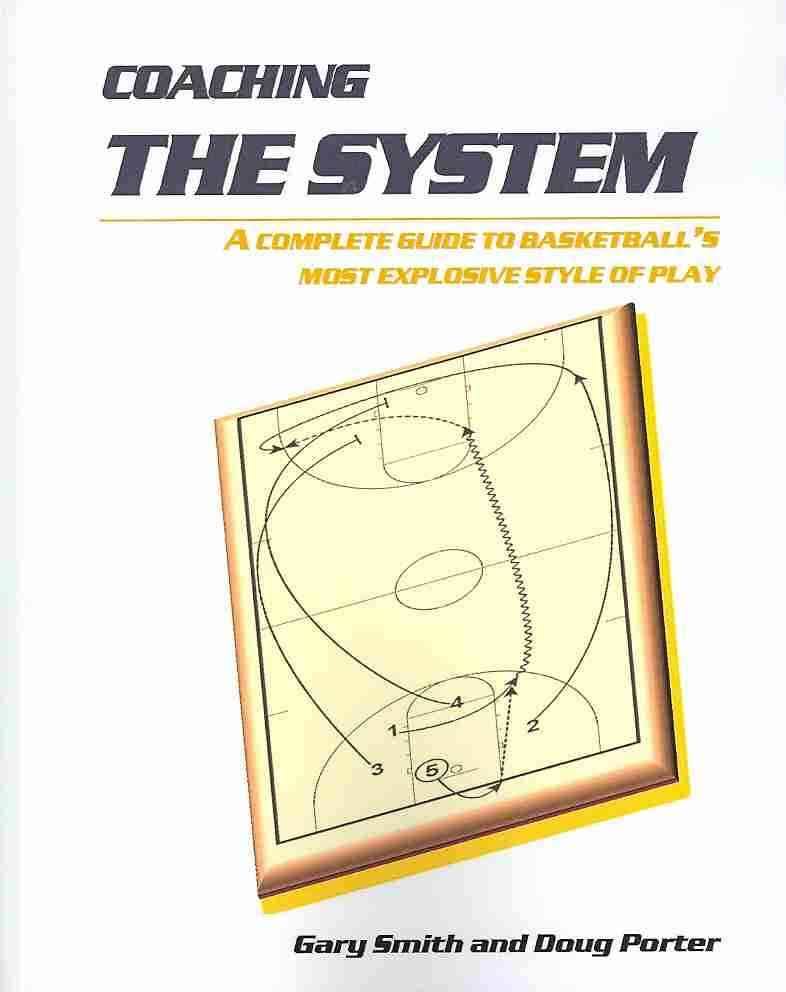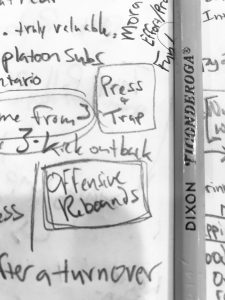
 The most viewed TED Talk of all time was given by Sir Ken Robinson, and it is entitled, “Do Schools Kill Creativity?” LINK With over 65 million views, one of the main concepts of Sir Ken’s talk was whether or not schools are destroying educational progress by discouraging failure. As he states in his talk, “… we’re now running national education systems where mistakes are the worst thing you can make.” I could not help but think of Sir Ken Robinson when reading, Coaching the System(2011) by Gary Smith and Doug Porter. These two seasoned coaches have provided a wonderful resource to the coaching community that first appears to be about teaching an offensive “system,” but to me- and I think the authors might agree- this book is really more about coaching philosophy. True Ballers of all walks of life would learn a lot about the game by lending an open mind to their testimony.
The most viewed TED Talk of all time was given by Sir Ken Robinson, and it is entitled, “Do Schools Kill Creativity?” LINK With over 65 million views, one of the main concepts of Sir Ken’s talk was whether or not schools are destroying educational progress by discouraging failure. As he states in his talk, “… we’re now running national education systems where mistakes are the worst thing you can make.” I could not help but think of Sir Ken Robinson when reading, Coaching the System(2011) by Gary Smith and Doug Porter. These two seasoned coaches have provided a wonderful resource to the coaching community that first appears to be about teaching an offensive “system,” but to me- and I think the authors might agree- this book is really more about coaching philosophy. True Ballers of all walks of life would learn a lot about the game by lending an open mind to their testimony.
What it’s not.
Coaching the System is not a narrative story. Although it does include lots of real world implementation anecdotes, this is not the beach read with the magical championship season. This is game study.
It does not center on individual technique. Footwork, passing, and shooting are all important aspects of The System, but this book is emphasizing the team approach.
What it is.
The complete title is, “Coaching the System: A complete guide to basketball’s most explosive style of play.” I picked this up a few years ago when I was looking for a way for my middle school team to score more. I think that is probably why most coaches who end up looking into The System do so. For me, personally, I had never really been exposed to System basketball before. As far as I know- it is not a very common occurrence to encounter a System team in my area of upstate NY. We seem to be heavily influenced by the half court defensive zone in these parts. If this is a result of the influence of the Syracuse Orange, I don’t know, but it seems to be. System style of basketball could not be more different, more unconventional, or more “outside of the box,” than what I’m used to. And I think that is why I am so intrigued by it.
title is, “Coaching the System: A complete guide to basketball’s most explosive style of play.” I picked this up a few years ago when I was looking for a way for my middle school team to score more. I think that is probably why most coaches who end up looking into The System do so. For me, personally, I had never really been exposed to System basketball before. As far as I know- it is not a very common occurrence to encounter a System team in my area of upstate NY. We seem to be heavily influenced by the half court defensive zone in these parts. If this is a result of the influence of the Syracuse Orange, I don’t know, but it seems to be. System style of basketball could not be more different, more unconventional, or more “outside of the box,” than what I’m used to. And I think that is why I am so intrigued by it.
Gary Smith and Doug Porter do a masterful job explaining their style of play. You get the sense that they are true teachers of the game. They communicate the written word very effectively, and address many different details and game circumstances of The System in a very specific way.
From the outsider point of view, The System style of play falls in that category of “run and gun,” offense. It involves full court pressing from the opening tip off, defensive trapping, and lots of 3 point shot attempts. It looks like chaos, but it’s a controlled chaos. It’s a chaos that is intentionally thought out and prepared for. Check out this LINK to watch one of the most famous System games ever.
What resonates the most about Coaching The System to me is the coaching philosophy behind it. Take, for example, this quote:
“System philosophy is unique for reasons that stretch beyond the obvious difference in tempo. One of the most important of these differences is that the System lends itself to a more humane approach. It can be more fun for players, of course. But it is also within the very nature of The System to foster an environment where their fear of failure is minimized.”
In my opinion, the greatest obstacle for youth players is overcoming their fear of failure. It hinders not only their own personal progress, but also the progress of the team and its ability to play with flow and creativity. The fear of failure manifests itself in various ways for players. One of the most insidious ways the fear of failure shows up is with quick moments of hesitation. Hesitation, in the game of basketball, is devastating. It happens because players are not playing based off of instinct, but instead are playing based off of ‘What if?’ What if I mess up? And as a coach, you can harp on a player all day long to “not be afraid to make a mistake.” But players need to experience overcoming their fears for themselves- for real. This is where the true genius of The System lies. Due to its very nature, The System-coached correctly– goes to battle with the fear of failure. As Smith and Porter state through out the book, the goal is not to get “the right shot,” but to get as many shots as possible. A key feature in The System is a positive shot differential; meaning, that your team shoots and shoots often. Gone are the days of ball control half court offenses based on passing the ball until the highest percentage shot is available within the shot clock allotted time. No, The System is all- full court press, trap, run, pass, shoot, rebound, repeat. And it requires fresh legs to sustain itself- so that means many bench players are on full rotation. In The System, players don’t have time to think- they only have time to play.
The System is not without its detractors. Smith and Porter are very upfront about this. There are standard criticisms that they lay out. The System is risky, and not for everybody. A young coach could put their career on the line by going all in with The System- especially in a locale that is not accustomed to it.
But as the authors point out early in the book, the great John Wooden believed that basketball is, “meant to be played fast.” So if playing fast and scoring a lot of points with fearless players sounds intriguing to you- maybe you want to give “Coaching the System,” a read.
Overtime